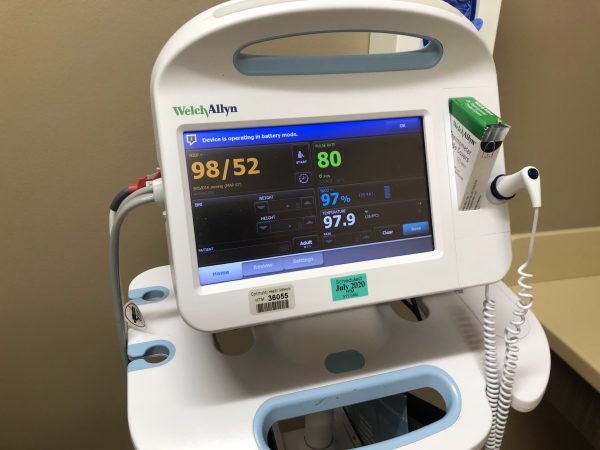
串口屏简介
串口屏在现代电子设备中发挥着至关重要的作用,为各类应用提供直观且交互式的用户界面。从智能手机到工业控制面板,串口屏已成为不可或缺的组件,提升用户体验并优化操作流程。
本文将深入探讨串口屏的功能、类型及应用,并介绍该领域最新技术进展。
串口屏组件解析
串口屏通常包含以下组件:
触摸传感器层:
- 触摸传感器层负责检测触摸输入并将其转换为数字信号。常见技术包括电阻式、电容式和红外线式,以实现不同触摸灵敏度。
控制器IC:
- 控制器IC处理来自触摸传感器层的信号,并与设备的中央处理单元(CPU)通信以执行命令和手势。
- 驱动软件
- 驱动软件促进串口屏与设备操作系统之间的通信,确保无缝集成和兼容性。
- 显示面板
- 显示面板向用户提供视觉反馈,根据触摸输入显示图形界面、菜单和内容。
串口屏类型
- 电阻式串口屏
- 电阻式串口屏由柔性材料层构成,表面涂有导电层和电阻层。其通过测量电阻变化来检测触摸输入,常用于需要耐用性和成本效益的应用场景。
- 电容式串口屏
- 电容式串口屏利用人体的电学特性检测触摸输入。它们具有高灵敏度,支持多点触控手势,广泛应用于智能手机、平板电脑和自助终端。
- 表面声波(SAW)串口屏:
- SAW串口屏利用超声波检测触摸输入,提供卓越的清晰度和耐用性。它们适用于需要高精度和可靠性的应用,如医疗设备和工业控制面板。
- 红外(IR)串口屏:
- 红外串口屏通过红外传感器检测触摸输入,实现准确且响应迅速的交互。它们适用于需要戴手套或使用触控笔的场景,如户外自助终端和互动显示屏。摸屏模块通过红外传感器检测触摸输入,实现准确且响应迅速的交互。它们适用于需要戴手套或使用触控笔的场景,如户外自助终端和互动显示屏。
- 光学串口屏
- 光学串口屏采用摄像头或红外传感器检测触摸输入,提供精准可靠的交互体验。它们常用于大尺寸显示屏和互动白板。
串口屏的应用
- 消费电子产品
- 串口屏广泛应用于消费电子产品,包括智能手机、平板电脑、笔记本电脑和游戏主机,为日常使用提供直观的界面。
- 汽车信息娱乐系统
- 汽车制造商将串口屏集成到信息娱乐系统、导航显示屏和控制面板中,使驾驶员和乘客能够轻松访问多媒体、导航和车辆设置。
- 工业自动化:
- 串口屏在工业自动化中发挥关键作用,使操作员能够监控流程、控制机械设备并与人机交互界面(HMI)系统交互,实现高效运营和维护。
- 零售与 hospitality
- 串口屏广泛应用于零售和 hospitality 环境,驱动自助服务终端、销售点终端、数字标牌和互动菜单,提升客户参与度并简化交易流程。
- 医疗保健:
- 在医疗保健领域,串口屏被应用于医疗设备、患者监护仪、诊断设备和电子健康记录(EHR)系统,实现数据可视化、患者互动和临床工作流程优化。
最新进展与未来趋势
- 人工智能与机器学习的集成
- 串口屏正越来越多地集成人工智能和机器学习算法,以分析用户行为、预测偏好并优化用户界面,从而提供个性化体验。
- 增强耐用性和可靠性:
- 制造商正致力于提升串口屏的耐用性和可靠性,以适应工业、汽车和户外应用中的严苛环境、极端温度和高强度使用。
- 手势识别与3D触控:
- 手势识别和3D触控技术不断演进,使串口屏能够检测复杂手势、压力级别和空间交互,从而提供更直观、沉浸式的用户体验。
- 与物联网(IoT)和连接性的集成:
- 串口屏正与物联网(IoT)设备和连接功能集成,实现与智能家居系统、可穿戴设备和联网家电的无缝交互。
- 柔性与可折叠显示屏:
- 柔性与可折叠显示技术的发展为串口屏开辟了新机遇,支持创新形态、便携设备及可穿戴技术、柔性显示屏和智能表面等多元化应用。
结论
串口屏彻底改变了我们与技术互动的方式,为各类应用和行业提供了直观、响应迅速且沉浸式的用户界面。随着触摸技术、人工智能、物联网和柔性显示技术的持续进步,串口屏有望推动创新并塑造人机交互的未来。